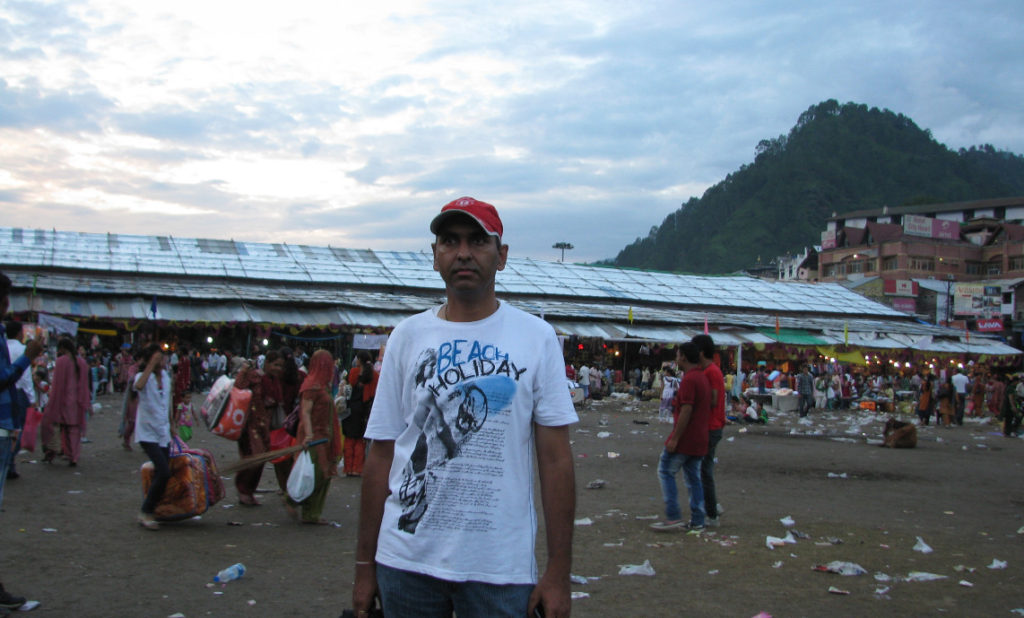
Chamba is bounded on north-west by Jammu and Kashmir, on the north-east and east by Ladakh area of Jammu and Kashmir state and Lahaul and Bara-Bangal area of Himachal Pradesh, on the south-east and south by the District Kangra of Himachal Pradesh and Gurdaspur District of the Punjab.
The Chamba District is situated between north latitude 32° 11′ 30” and 33° 13′ 6” and east longitude 75°49 and 77° 3′ 30”, with an estimated area of 6522 square Kilometers and is surrounded on all sides by lofty hill ranges. The territory is wholly mountainous with altitude ranging from 2,000 to 21,000 feet.
Chamba the land of lord Shiva is famous for its untouched natural beauty. The district has Dalhousie, Khajjiar, Chamba Town, Pangi and Bharamour as main tourist destinations. There are five lakes, five wild life sanctuaries and countless number of temples.
Chamba, is a small but attractive tourist destination of Himachal Pradesh, is known for its exquisite natural beauty. The place, located amidst picturesque and verdant valleys, is visited by tourist round the year. Sub-Himalayan range of mountains, full of diverse flora and fauna, make Chamba an exhilarating experience. Pleasing climate of the place is another factor why Chamba is one among the popular tourist destinations in the whole of India. In the following lines, we will provide you more information on the weather and climate of Chamba.
The summer season in Chamba starts from the middle of April and lasts till the last week of June. Even in summers, when the plains are boiling with high temperatures, the weather here remains quite pleasing. This is the time when majority of tourist takes shelter in the place. Days are a little warm, but nights are romantic and cool. Light cotton clothes are ideal during summers.
Rains in Chamba start in the month of July, when the monsoon breaks-in, and continue till late August or mid September. This is the time when the weather is misty and cloudy. During this time, the entire valley is covered in a hue of light green, with newly washed leaves shining in the glory of after-rain sunshine.
The winter season in Chamba starts in the month of December and lasts till the month of February. During this season, Chamba generally remains cool and dry, but snowfall does occur at higher elevations, during these months. In the winter season, the temperature might drop to freezing point in the lower region too and snowfall may happen. Tourists should go with heavy woolen clothes during this season and enjoy snowfall.
The Laxmi Narayan Temple is the main tourist attraction of the town. The architecture of the six temples in this complex is an example of the Hindu shikhara style of architecture. However, the local flavor is distinct and makes the carvings on these temples unique. Three temples are dedicated to Lord Vishnu, and another three to Lord Shiva. The temple was built in the 10th century AD and was renovated in the 16th century. This Laxmi Narayan Temple complex also some fine sculptures of residing deities, which include figures of Lord Vishnu (of the Hindu trilogy), Goddess Laxmi (Goddess of wealth), Narasimha (Lion form of Lord Vishnu) and Lord Krishna.
Chowgan, the grassy promenade at the heart of the town, is the focus for local festivals.
To the northeast of the Laxmi Narayan temple lies the small Surara temples. Nearby is the Brajreshwari Devi temple, dedicated to Goddess Durga. This temple is constructed in the of traditional shikhara style and is known for intricate carvings on its surface.
Tour to Chamba The Chamunda Devi Temple is located on a hill overlooking the town of Chamba and one has to climb for about 30 minutes to reach it. This temple is dedicated to Chamunda, the wrathful form of Goddess Durga. The entire wooden ceiling of this temple is embellished with intricate carvings depicting floral motifs and different deities. This temple has a number of brass bells, offered by the devotees, and footprints of the Goddess on a small pillar.
The Sui Mata Temple is located between the Chamunda Devi temple and Brajreshwari Devi temple, and is dedicated to Sui Mata (a local princess, who gave her life for the people in Chamba). Colorful paintings within the temple depict the life of Sui.
The 11th-century Harirai Temple dedicated to Lord Vishnu is also made in the Shikhara style and has a triple-headed statue of Lord Vishnu made from eight different materials.
Other temples to visit in Chamba are the Radha Krishna Temple, the Sitaram Temple and the Champavati Temple.
The Rangmahal or the Old Palace is another important place to visit and houses the Himachal Emporium, from where the travelers can buy handicraft items. The Bhuri Singh Museum has a good collection of artifacts belonging to this region. Of particular importance is the collection of traditional miniature paintings. St Andrew’s Church and Gandhi Gate are also worth visiting.














